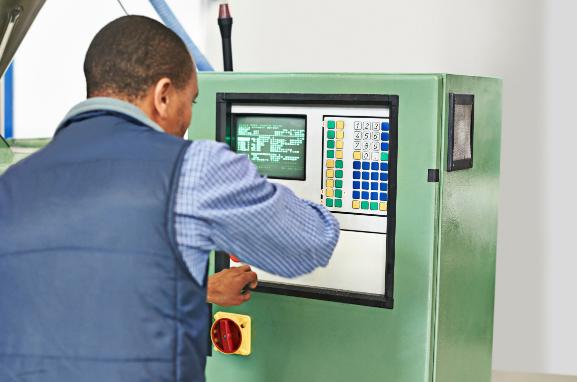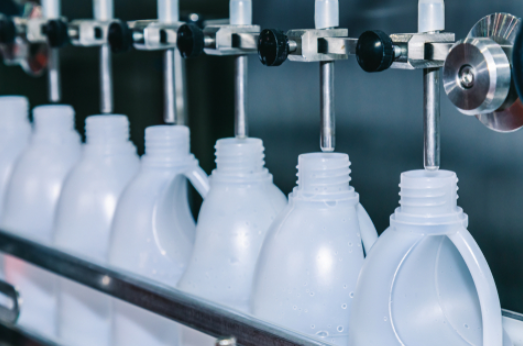Back pressure in injection molding ensures material consistency, improves quality, and aids in efficient mold filling.
Understanding Injection Molding
Injection molding stands as a pivotal process in the manufacturing industry, transforming raw materials into diverse and complex products. This method primarily involves injecting molten material into a mold to create parts with precision and repeatability.

Basic Principles of Injection Molding
The Core Process
At the heart of injection molding lies the process of melting plastic granules and then injecting the molten plastic into a mold cavity. The material cools and solidifies, taking the shape of the mold. Manufacturers often choose this technique for its ability to produce high volumes of identical parts with tight tolerances.
Materials Used Common materials in injection molding include thermoplastics, thermosetting polymers, and elastomers. Each material offers distinct properties like durability, flexibility, and resistance to heat and chemicals. Material selection is crucial for achieving desired product characteristics.
Key Components and Their Functions
Injection Unit
The injection unit is responsible for melting and injecting the material into the mold. It includes components like the hopper, screw, and barrel. The hopper stores the raw material, while the screw melts and pushes the material into the mold.
Clamping Unit
The clamping unit holds the mold in place during the injection and cooling phases. It must apply sufficient force to keep the mold closed against the high pressure of the injected material.
Mold
The mold, typically made of steel or aluminum, defines the shape and surface texture of the final product. Its design and complexity directly impact the quality and precision of the molded part.
Control System
Modern injection molding machines feature advanced control systems for precise regulation of parameters like temperature, pressure, and injection speed. These systems ensure consistency and efficiency in the production process.
Power and Efficiency
Injection molding machines consume significant power, primarily for heating and operating the hydraulic systems. Manufacturers often focus on energy-efficient designs to reduce operational costs. The efficiency of these machines is vital for maintaining a competitive edge in terms of production costs and environmental impact.
Cost Factors Several factors influence the cost of injection molding. These include the design and complexity of the mold, material choice, production volume, and machine efficiency. A well-designed mold, though expensive, can significantly reduce per-unit costs in high-volume production.
The Role of Back Pressure in Injection Molding
In the realm of injection molding, back pressure plays a pivotal role, significantly influencing the quality and characteristics of the final product. Understanding and optimizing back pressure is essential for achieving precision and efficiency in the injection molding process.
Definition and Mechanism of Back Pressure
What is Back Pressure?
Back pressure refers to the resistance against the flow of the molten plastic inside the barrel of the injection molding machine. This pressure is controlled and applied during the plasticizing stage, where plastic granules are melted and mixed.
The Mechanism The mechanism of back pressure involves the screw in the injection unit. As the screw rotates, it not only melts the plastic but also retracts to create space for the molten plastic. The resistance applied during this retraction is the back pressure. Adjusting the back pressure can change the characteristics of the melt, such as its temperature, consistency, and color dispersion.
How Back Pressure Affects the Molding Process
Impact on Material Quality Back pressure ensures homogeneity in the molten plastic. A higher back pressure generally results in better mixing, leading to a consistent material quality. This uniformity is crucial for parts requiring high precision and strength.
Effects on Viscosity and Temperature
The back pressure increases the temperature and viscosity of the melt. By carefully controlling these parameters, manufacturers can enhance the flow properties of the plastic, which is especially beneficial for intricate mold designs.
Influence on Injection Speed and Cycle Time
Optimizing back pressure affects the injection speed and overall cycle time of the molding process. While higher back pressure can improve quality, it may also increase cycle time, impacting production efficiency.
Cost Implications
The application of back pressure has cost implications. Higher back pressure requires more energy, thus increasing operational costs. However, the improved quality and reduced waste can offset these costs in large-scale production.
Trade-offs
A key trade-off in using back pressure is balancing quality with efficiency. Excessive back pressure might degrade the material or cause excessive wear on the injection molding machine, leading to higher maintenance costs.

Optimizing Back Pressure
Optimizing back pressure in injection molding is essential for achieving high-quality products with consistent material properties. The key lies in understanding how to adjust back pressure and recognizing its effects on product quality.
Adjusting Back Pressure for Material Consistency
Fine-Tuning Back Pressure Settings
To ensure material consistency, adjusting the back pressure is crucial. The ideal back pressure varies depending on the type of plastic and the design of the product. For instance, stiffer materials may require higher back pressure, typically ranging from 150 to 500 psi, to ensure proper mixing and melting.
Monitoring Material Behavior
Observing how the material behaves under different back pressure settings helps in fine-tuning the process. Consistency in the material’s appearance, absence of streaks or bubbles, and uniform coloration are indicators of optimal back pressure.
Effects of Back Pressure on Product Quality
Enhanced Strength and Stability
Properly optimized back pressure contributes to the strength and stability of the finished product. It ensures that the plastic fills the mold completely, reducing the likelihood of defects like sink marks or voids.
Surface Finish and Aesthetic Quality
The surface finish, an important quality aspect, particularly for visible parts, is greatly influenced by back pressure. A well-adjusted back pressure helps in achieving a smooth and defect-free surface.
Dimensional Accuracy
For products where dimensional accuracy is critical, back pressure plays a pivotal role. It aids in maintaining the consistency of the material, which translates to parts that meet strict dimensional tolerances.
Cost Efficiency and Energy Consumption
While optimizing back pressure can enhance product quality, it’s important to balance it with energy consumption and cost efficiency. Excessive back pressure increases the machine’s power requirements, thereby raising operational costs.
Optimization Strategies
To optimize back pressure, manufacturers can use a trial-and-error method or rely on advanced software that simulates different back pressure scenarios. This approach helps in finding the right balance without excessive experimentation.
Challenges and Solutions in Back Pressure Regulation
Navigating the challenges of back pressure regulation in injection molding is crucial for maintaining product quality and operational efficiency. Understanding these challenges and the technological advancements that address them is key to successful molding operations.
Common Issues in Back Pressure Control
Inconsistency in Material Quality
- Variations in material viscosity can lead to inconsistent back pressure, affecting product quality.
- Fluctuations in material batch quality may require frequent adjustments in back pressure settings.
Machine Wear and Tear
- High back pressure levels can accelerate wear and tear on the injection molding machine, especially on the screw and barrel.
- Regular maintenance and monitoring are required to mitigate this issue.
Energy Consumption
- Increased back pressure demands higher energy usage, impacting operational costs.
- Balancing energy efficiency with optimal back pressure settings is a challenge.
Technological Advancements in Back Pressure Management
Smart Control Systems
- Advanced control systems now allow for precise and automated back pressure adjustments.
- These systems can adapt to changes in material properties and environmental conditions, ensuring consistent quality.
Improved Machine Design
- Modern injection molding machines are designed to withstand higher levels of back pressure without significant wear.
- Enhanced components such as reinforced screws and barrels are used to extend machine lifespan.
Energy Efficient Solutions
- Technologies that reduce energy consumption while maintaining optimal back pressure are being developed.
- Examples include more efficient hydraulic systems and the use of electric drives.
Data Analytics and Machine Learning
- The use of data analytics helps in predicting the optimal back pressure settings based on historical data.
- Machine learning algorithms can optimize settings in real-time for each molding cycle.

Case Studies and Applications
Exploring case studies and applications sheds light on the real-world implications of optimal back pressure in injection molding. These examples highlight successful applications and the lessons learned from challenges, providing valuable insights for the industry.
Successful Applications of Optimal Back Pressure
High-Precision Medical Equipment
- Medical devices require extreme precision and consistency.
- Optimal back pressure ensured uniform material density, leading to products meeting stringent health standards.
Automotive Component Manufacturing
- Complex parts with specific strength and durability requirements.
- Adjusting back pressure improved material flow and filled intricate mold designs effectively.
Consumer Electronics
- Thin-walled casings for gadgets with high aesthetic and functional standards.
- Balanced back pressure achieved the required surface finish and dimensional accuracy.
Lessons Learned from Back Pressure Challenges
Managing Material Variability
- Different materials react uniquely under pressure.
- Adaptation to material properties was key to maintaining quality across various products.
Energy Efficiency Concerns
- High back pressure settings increased energy consumption significantly.
- Implementing energy-saving measures while maintaining optimal back pressure was crucial for cost-effective operations.
Equipment Maintenance and Longevity
- Continuous high-pressure operations led to faster wear and tear.
- Regular maintenance and investment in durable machine parts reduced long-term costs.




